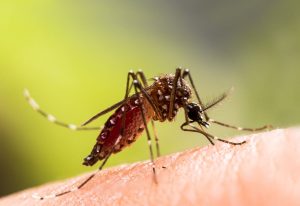THE INTERNET apparently has a very short memory. Case in point: approximately every six months, we get a slew of articles proclaiming that “The Male Pill is Coming” and “Male Birth Control Pill Is Finally Here.” What does this repetitive but hopeful enthusiasm tell us?
Firstly, that, despite the fact that the female birth control pill has been on the market for some fifty-odd years and Viagra got invented, creating a male Pill has proven too complicated (or so we’re told). Secondly, it tells us that women don’t really like the options already available to them, even though every other article tells us there are so many out there that we just need to find the perfect “fit.’ It suggests women — for a couple of generations now — are not that happy with bearing most of the burden and responsibility for preventing pregnancy. Thirdly, it tells us that society isn’t quite ready to accept the reasons contributing to the current wide-spread expectation that women take on the side effects of birth control for years on end in order to delay or avoid having children, with a smile on their face and a “thank you” on their lips to boot.
So, in this latest iteration of the myth of the male birth control pill, it’s a Pill coming out of Indonesia and it’s “plant-based” (a mostly meaningless statement when you consider that the female pill is also partly plant-based). A shrub called Justicia gendarussa has given up the secret to a super-effective Pill for men some decades after the people living on Papua, the island on which it grows, figured that out. The contraceptive benefits of Justicia gendarussa lie in the way that interferes, once ingested, with the enzymes that enable sperm to connect with the egg. Although the men of Papua choose to drink a tea with boiled gendarussa thirty minutes before sex, the plan for pill version is that men will be taking one tablet per day. One trial was conducted with 350 men and the side effects cataloged so far are weight gain, with a return of normal sperm motility 30 days after stopping use.
In the past, male Pill research has concentrated on lowering testosterone, which has had much the same impact as lowering estrogen and progesterone does with women. Despite large and comprehensive studies, the side effects of this particular approach for men have always prevented further development. What’s good enough for women is not, it would appear, good enough for men. Bambang Prajogo, the lead scientist on this study, is quoted as saying this gendarussa-based pill does not affect male hormones in order to affect sperm production.
Apparently, a major US pharmaceutical company has offered to purchase the patent for the pill. This could lead to not only intrusion into the island of Papua, without much benefit to the people, but also the prevention of use by those that have used and relied on it for generations. As I’ve written about previously, there are many natural birth control methods that were used in the past that we do not have access to or knowledge of today. People independently (and successfully!) controlled births for some time before the development of pharmaceuticals. Reports describe plans are being laid to have it on the Indonesian market by 2016, with no strategy yet mentioned for introducing it to the US or Europe. In fact, a report in The Jakarta Post details how the researchers intend to “protect” the plant from exploitation by foreign parties.
So, the takeaway? Don’t hold your breath. A 2016 release in Indonesia does not mean FDA approval that same year. A pill like this is unprecedented and, as such, a possibility for making billions for the pharmaceutical industry, but it’s also a potential threat to the industry of hormonal birth control for women, which is a sure and safe bet for billions per year already. Keeping women on their pills and using their devices coupled with men taking their own version of birth control pills at the same time would be the ideal situation, economically-speaking. That the female Pill is now positioned as a cure-all for every woman’s health issue from hormonal acne to PCOS (polycystic ovary syndrome) to cramps to PMS, it seems unlikely women would forgo it altogether and, in all likelihood, we would be persuaded by health professionals not to. Just look at how condoms have gone from being portrayed as a good choice for contraception and STD prevention to being marketed as only useful for STD prevention, requiring support from a hormonal method for use as birth control.
In Jonathan Eig’s book on the history of the Pill, he details how early trials of birth control pill formulations included men along with women. Back then, it seemed plausible that this might work, even if in the end no amount of side effects would be acceptable for someone who could not get pregnant themselves. Today women see the Pill as a “necessity” — a drug they need to control their periods and all that comes along with menstruating. Although most of the coverage of the new male pill positions such a finding as an escape hatch for women wanting to be rid of the side effects and beleaguered health that comes from their most effective choices, that’s not really a plausible scenario anymore. I think we have got to a point where some men want to take more responsibility for avoiding pregnancy and do feel it’s unfair that women have to carry the burden, but there’d need to be a major cultural shift when it comes to views on sexual responsibility if we want to see the majority of men keeping a packet of pills on their nightstand.
It just doesn’t seem all that likely that we’ll be saying to our doctor, “Oh, I’m fine, my boyfriend’s on the Bryce Pill” (because they’d have to name it something like that — something similar to “Yasmin” and “Alesse”) anytime soon without getting the response, “Well, can you trust him? And that won’t solve your irregular periods.
I think you should consider this Pill.”


-300x200.jpeg)









-300x241.jpeg)




